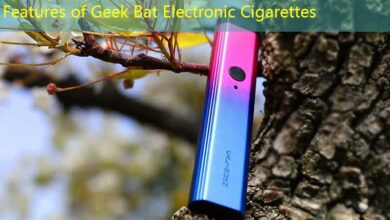What Makes Dab Pens So Popular in Cannabis Culture? How Do They Compare to Traditional Methods?
What is a Dab Pen?
As cannabis culture continues to grow and evolve, so too do the devices used to consume it. One of the most popular and innovative methods is the use of a dab pen. But what exactly is a dab pen, and why has it become a go-to choice for both novice and seasoned cannabis users? В этой статье, we will delve into the features, benefits, and practical applications of dab pens, providing you with a comprehensive understanding of this trendy smoking device.
Understanding Dab Pens
At its core, a
dab pen
is a portable vaporizer specifically designed for consuming cannabis extracts, commonly referred to as “dabs.” Unlike traditional smoking methods, dab pens heat up concentrates to a temperature that vaporizes the active compounds without burning them, allowing for a smoother inhalation experience. Most dab pens are compact, battery-operated devices that can easily fit in your pocket, making them convenient for on-the-go use.
Components of a Dab Pen
To fully understand how dab pens work, it’s essential to familiarize yourself with their key components:
1. Battery: This powers the device and is usually rechargeable. Higher-quality batteries can deliver consistent and powerful performance.
2. Atomizer: The atomizer is responsible for heating the concentrate. There are various types, including quartz, ceramic, and titanium, each affecting the flavor and potency of the vapor.
3. Mouthpiece: The part of the pen where users inhale. Mouthpieces can vary in design, impacting comfort and ease of use.
4. Chamber: This is where the concentrate is placed. Depending on the design, it can accommodate different levels of concentrate thickness.
The combination of these components determines the overall performance of the dab pen, including its ability to produce high-quality vapor and its effectiveness in preserving flavor.
Benefits of Using a Dab Pen
Dab pens offer several advantages over traditional smoking methods:
1. Discreetness: The compact size and lower odor production make dab pens a more discreet option for users. They do not emit the same strong smell as traditional cannabis products.
2. Portability: Due to their small size and lightweight design, dab pens can be easily carried and are ideal for users who are always on the move.
3. Flavor Preservation: Unlike combustion, which can destroy terpenes—compounds responsible for flavor in cannabis—dabbing preserves these flavors for a richer experience.
4. Efficient Dosing: Dab pens allow users to consume precise amounts of concentrates, making it easier to manage dosage and effects.
Comparing Dab Pens to Other Methods
To further illustrate the advantages of dab pens, here’s a comparison of dab pens, traditional smoking methods, and other vaporization devices:
| Method | Discretion | Flavor Preservation | Ease of Use | Portability |
|---|---|---|---|---|
| Dab Pen | High | High | Very Easy | Very High |
| Traditional Smoking | Low | Medium | Easy | Medium |
| Desktop Vaporizer | Low | High | Moderate | Low |
From this comparison, it’s clear that dab pens offer an impressive blend of benefits, making them an appealing option for cannabis consumers.
Common Questions About Dab Pens
How do you use a dab pen?
Using a dab pen is a straightforward process. Begin by ensuring the battery is charged. Load a small amount of your chosen concentrate into the chamber, turn on the device, and wait for it to heat. Once it’s ready, inhale through the mouthpiece while the atomizer vaporizes the concentrate.
What types of concentrates can be used in a dab pen?
Dab pens are versatile and can accommodate various types of concentrates, including wax, shatter, and oil. Different concentrates may require specific types of atomizers for optimal vaporization.
Are dab pens safe to use?
Yes, dab pens are considered safe when used correctly and when high-quality concentrates are employed. Однако, it’s essential to purchase dab pens from reputable manufacturers to avoid any potential risks associated with low-quality devices and materials.






